Chukars actually eat and digest grass. When you think about it that’s a pretty neat trick.
But first some background.
Green plants, especially grasses, are largely composed of cellulose. Cellulose is a rich energy source when it can be digested (broken down into individual simple sugars) but no animal is capable of producing the digestive enzymes required to do so. Animals such as cows, horses, sheep, goats, and termites have symbiotic bacteria in their intestinal tract that digest cellulose for them. Humans can’t digest cellulose but it acts as a bulking agent for feces and is often referred to as “dietary fiber”.
Some birds (ostriches, ducks and geese for example) also have those symbiotic bacteria in their gut and can digest cellulose indirectly. Two days ago this Chukar demonstrated for me that same impressive capability.
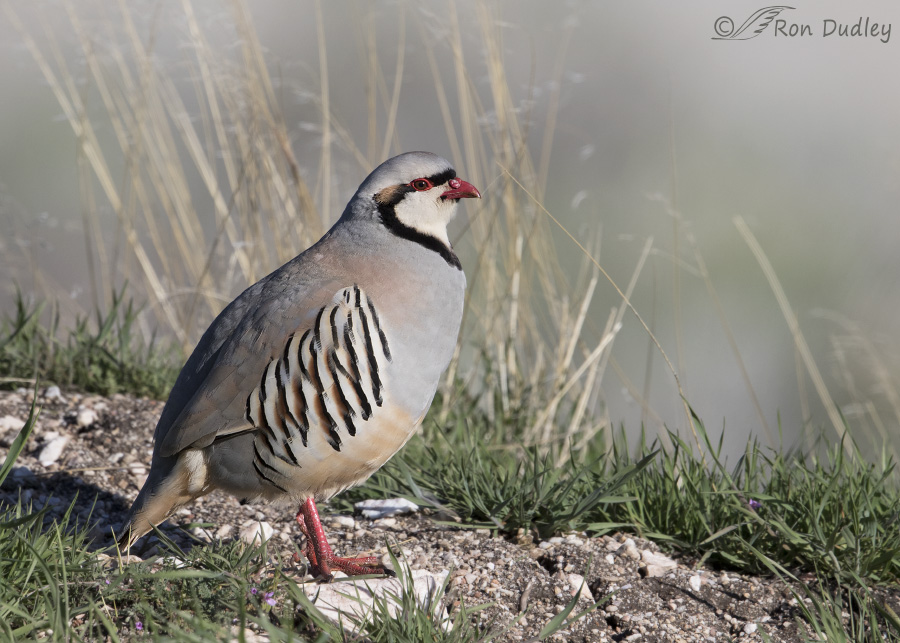 1/2500, f/7.1, ISO 400, Canon 7D Mark II, Canon EF 500mm f/4L IS II USM + 1.4 tc, not baited, set up or called in
1/2500, f/7.1, ISO 400, Canon 7D Mark II, Canon EF 500mm f/4L IS II USM + 1.4 tc, not baited, set up or called in
I spotted the bird as it was basking in the morning sun on the north end of the island. It stood almost motionless for some time but…
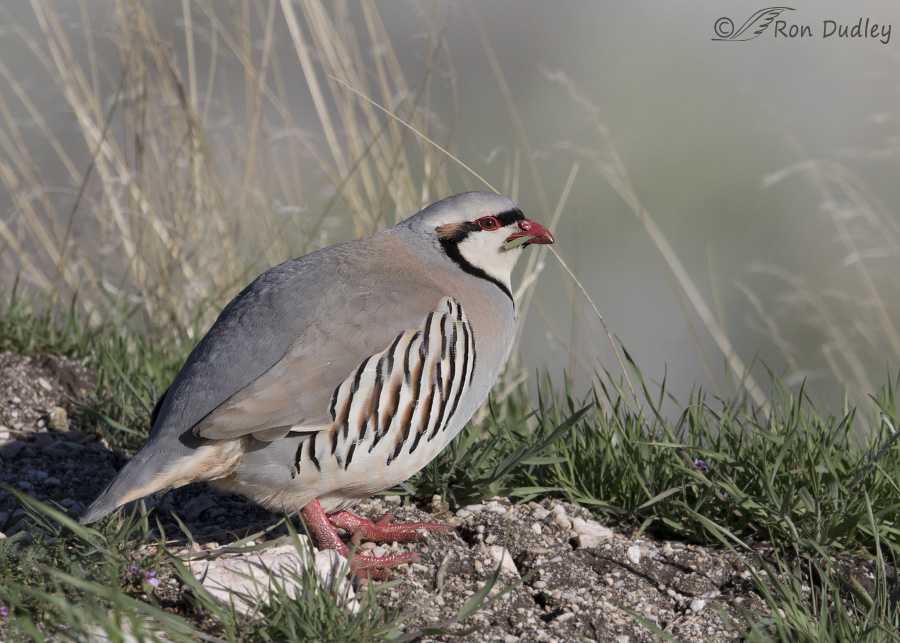
1/2500, f/7.1, ISO 400, Canon 7D Mark II, Canon EF 500mm f/4L IS II USM + 1.4 tc, not baited, set up or called in
eventually it began to graze on the lush growth of new spring grass in front of it.
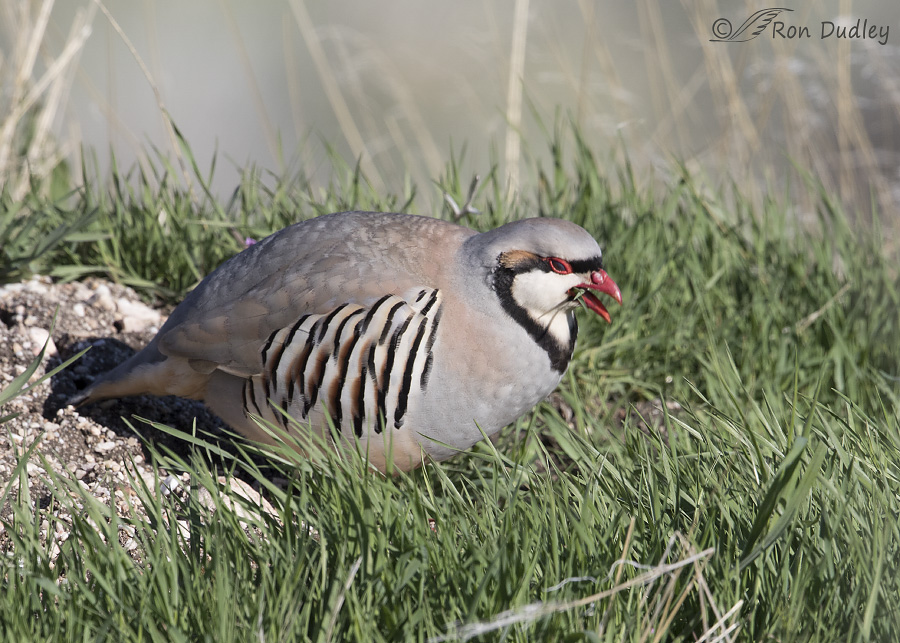
1/1250, f/7.1, ISO 400, Canon 7D Mark II, Canon EF 500mm f/4L IS II USM + 1.4 tc, not baited, set up or called in
Soon the bird moved forward a few inches to where the grass was thicker and began to graze enthusiastically.
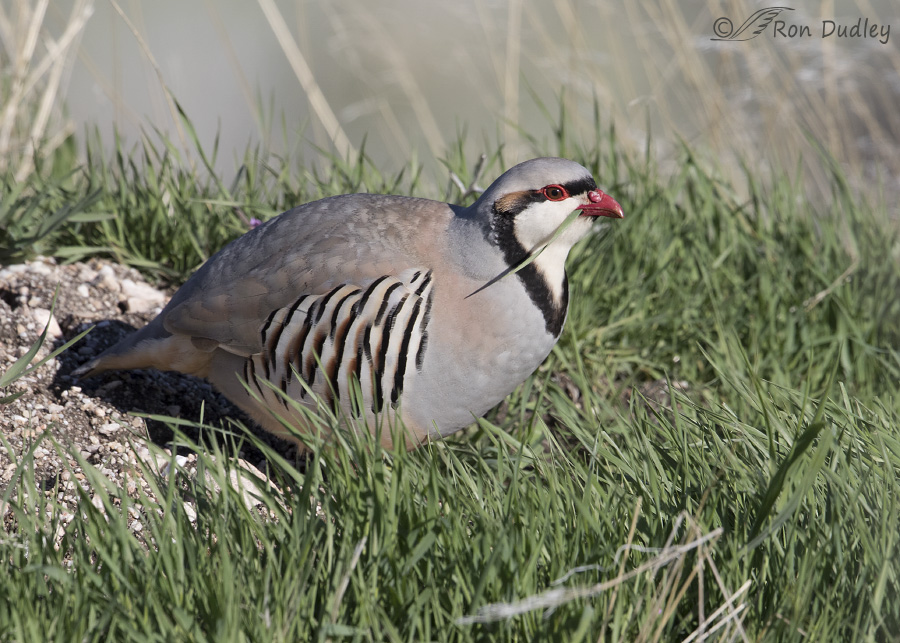
1/1250, f/7.1, ISO 400, Canon 7D Mark II, Canon EF 500mm f/4L IS II USM + 1.4 tc, not baited, set up or called in
Whenever its head popped back up where it could be seen the Chukar usually had grass hanging out of its mouth.
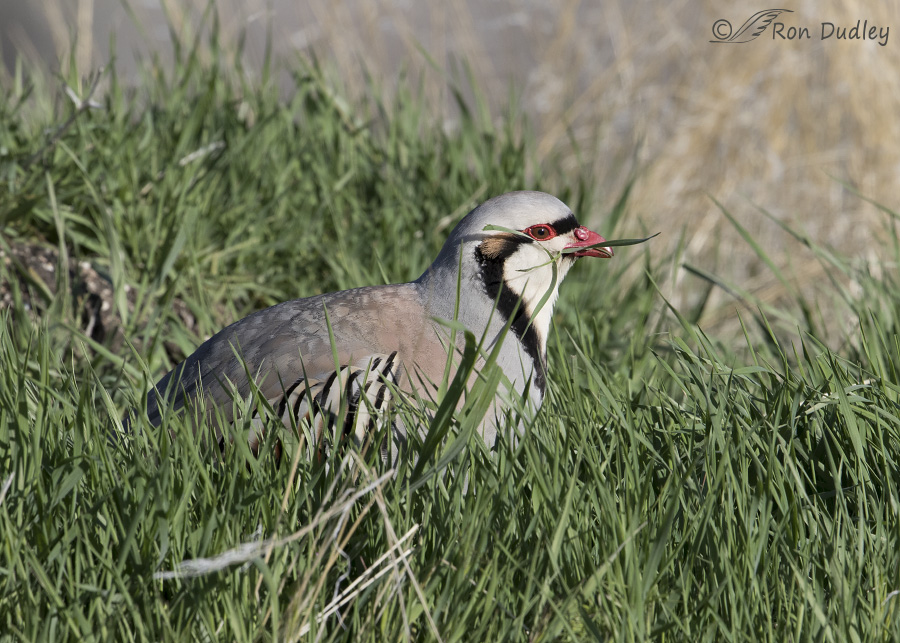
1/1600, f/7.1, ISO 400, Canon 7D Mark II, Canon EF 500mm f/4L IS II USM + 1.4 tc, not baited, set up or called in
As it moved further forward into even deeper grass I could usually see very little of the bird except when it lifted its head to (apparently) scan for danger. For me it’s just a little bit incongruous to see an upland game bird, or most any other bird except for Canada Geese and some ducks, grazing on grass. However, a little research on Birds Of North America Online tells me that during certain times of the year green grass provides the bulk of the diet of North American Chukars. Some other upland game birds also eat grass.
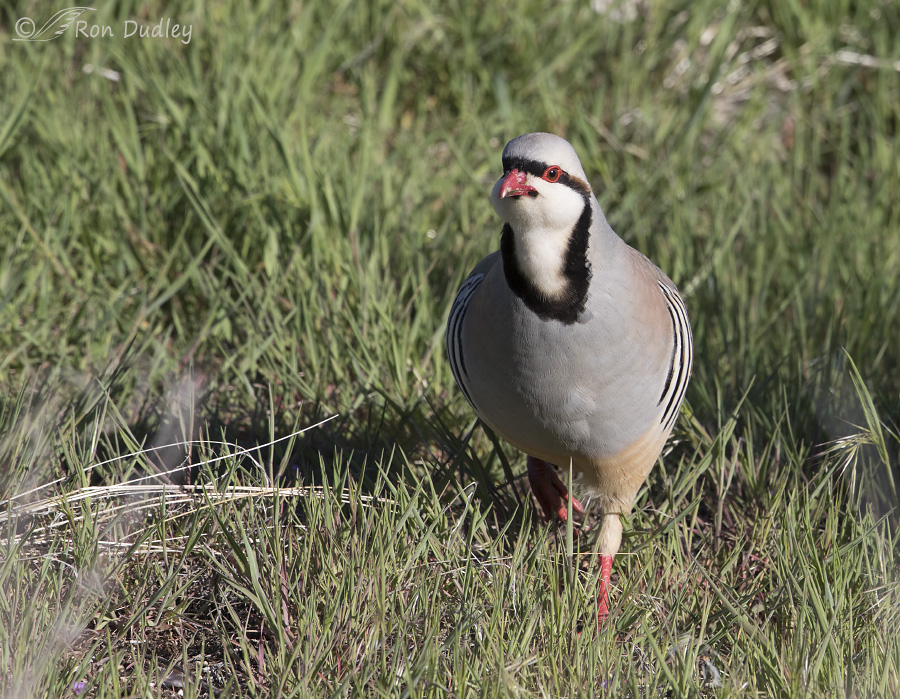
1/1250, f/7.1, ISO 400, Canon 7D Mark II, Canon EF 500mm f/4L IS II USM + 1.4 tc, not baited, set up or called in
When this bird finished its meal it walked briskly toward me before disappearing into the rocks and vegetation.
The ability to digest cellulose-laden grass is a major survival strategy because that polysaccharide is the most abundant organic compound on earth. If humans could digest it and found it palatable our hunger problems would largely be over. But we cannot digest it efficiently as is evidenced by the fact that when we eat corn the cellulose-rich husk surrounding the kernel generally “comes out” in the same condition it went in.
And that, I’m sure, is something you didn’t particularly want to think about over your morning coffee…
Ron
PS – Notice the bulging right cheek of this bird – it makes me wonder if Chukars have cheek pouches similar to those of chipmunks for the temporary storage of food. Probably not but the thought did come into my head…


I am glad that no-one is taking my photo as I eat. I probably do the chipmunk thing too. Chewing with your mouth closed will do that.
Love (of course) the chukar and of course it is revelling in the fresh grass.
“I am glad that no-one is taking my photo as I eat”
Me too, EC. I’m afraid it’s not a pretty sight…
Marvelous series Ron!
Charlotte
Thanks, Charlotte.
Ron I love the various hues of color on that chucker, makes me want to get the old paint brush out and see if I can duplicate them. We don’t have chuckers here, but do have Hungarian Partridge. One winter I flushed a covey while doing chores. One was injured and couldn’t fly too far, so I went to see where it had landed. All I could find was one spot of disturbed snow, and no tracks anywhere. I couldn’t figure where it has disappeared to. I then took my foot and brushed the snow back from the disturbed area. I got a good scare as that partridge erupted out of the snow and took off again. Also, during the winter I feed my geese a piece of baled hay each day along with their grain. They like the alfalfa best, even when growing in the field.
Marvin, A flock of Hungarian Partridges (we also used to call them Huns, their real common name now is Gray Partridge) flushed in front of you can scare the living poop right out of you. I’ve had it happen many times in Montana and boy it does get the heart racing and the adrenalin flowing!
So can a ring necked pheasant!!! I say they “explode” from the grass right under your nose!!!…
Yes, when huns or quail or pheasants or even jackrabbits flush at your feet, they will certainly get your blood pumping rapidly! The hawks seem to really enjoy that part, though. Guess it’s all in your perspective. I will probably never understand how jackrabbits do it, though. They seemingly need no cover at all to be invisible–until they’re not.
I will probably never understand how jackrabbits do it, though. They seemingly need no cover at all to be invisible–until they’re not.
I’ve seen enough “hay bellies”, but these birds seem to have “hay bodies”! That bird either has a cheek pouch or the mumps….or has swallowed a chipmunk! I understand the digestive process of ruminants, like cattle, but have wondered how horses, goats, deer and other non/cattle grass guzzlers digest grass, hay, leaves, bark and shrubs they eat.
Patty, many non-ruminant animals have a caecum (similar to our appendix only much larger) that contains the symbiotic bacteria that digest cellulose. Horses actually use bacteria in their hindgut to ferment cellulose, which breaks it down.
Interesting…thanks…
I learn something every day in your posts! The Chukar is a beautiful bird, and your very sharp images reveal the intricate detail. Many thanks – over morning coffee.
Jane, I’m glad you find my blog to be educational. Doing it helps me learn too.
What a glorious series of photos! They’re such beautiful birds, and as Judy Gusick said, always something new to learn. I love that!
And yes, redundant OH WOW!
Thank you, Laura.
I used to live in SE Oregon and there were lots of Chukars. I agree that when they raise their heard they are scanning for danger. I could never get close enough to take pictures with my old camera. They were extremely skittish
As always great photos
David, I’ve never seen as many Chukars in northern Utah as I have this year. They must have produced a lot of chicks last year.
“when we eat corn the cellulose-rich husk surrounding the kernel generally “comes out” in the same condition it went in. And that, I’m sure, is something you didn’t particularly want to think about over your morning coffee…” Hahaha! Good one. It’s always nice to start the day with a chuckle. And, nice images.
Glad you enjoyed it, Dave. I suspect some might not have, especially early in the morning.
Interesting and beautiful bird! It does look chipmunk/hamster like is the last photo. Always something new to learn.
Always something new to learn.
Thanks, Judy. Glad I’m not the only one who thought of the chipmunk thing…